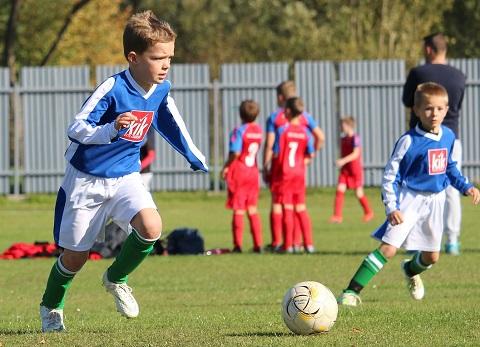
Published on: 25/02/20
Links between playing football and an increased risk of brain disease in later life lead the FA to update youth training guidance.

Published on: 25/02/20
The Football Association has updated its guidelines on heading the ball for youth training sessions, in light of a study which suggests former footballers are three-and-a-half times more likely to die from brain disease.
Children under 11 will no longer be taught to head footballs during training in England, Scotland and Northern Ireland, while coaches will also limit the amount of heading older children do. The updated guidelines do not affect heading in matches nor do they apply to Wales, where the guidance is still under review.
While the FA reiterated there was no direct evidence linking heading footballs to an increased risk of degenerative brain disease such as dementia, Alzheimer’s and Parkinson’s in later life, the new guidelines have been produced to mitigate any potential risk.
As well as banning heading in training sessions for primary aged children and introducing a graduated, low priority approach to heading between 12 and 16, the new guidelines also specify the required ball size for each age group and advise not to over-inflate the ball. There is no change to heading in youth matches, where headers are rare.
FA chief executive officer Mark Bullingham said: "This updated heading guidance is an evolution of our current guidelines and will help coaches and teachers to reduce and remove repetitive and unnecessary heading from youth football. Our research has shown that heading is rare in youth football matches, so this guidance is a responsible development to our grassroots coaching without impacting the enjoyment that children of all ages take from playing the game."
Speaking to the BBC News Dr Carol Routledge, director of research at Alzheimer's Research UK, said "Limiting unnecessary heading in children's football is a practical step that minimises possible risks, ensuring that football remains as safe as possible in all forms."
She called for more research in order to ‘unpick any link between football and dementia risk’ and said: "But, until we know more, making sure the nation's best-loved game is played as safely as possible is a sensible approach."
In the same report Dr Willie Stewart, the consultant neuropathologist who led the University of Glasgow study that prompted the change in guidelines, said he was encouraged to see the new guidelines but would like to see them adopted by the wider game and not just in youth football.
"A lot more research is needed to understand the factors contributing to increased risk of neurodegenerative disease in footballers,” he said. “Meanwhile it is sensible to act to reduce exposure to the only recognised risk factor so far."
The family of West Bromwich Albion football hero Jeff Astle, who died of chronic traumatic encephalopathy (CTE) in 2002, have described a ban on heading the ball among primary school children as a "huge step" in the right direction.
Speaking to the Express & Star, Jeff’s daughter Dawn, whose family has long campaigned about the dangers of heading, welcomed the news but argues there is still more to be done to limit heading among professional and amateur adult footballers.
"I'm pleased for the grassroots,” said Dawn. “They have got a responsibility for their players and I think they wanted clear guidance. We said they have to take early steps to avoid exposing children's brains to trauma. Preventing heading in training is a sensible step and is common sense. It's a really important issue. It's about the health of the brain and once that's damaged there is no going back."
Brain injury charities also welcomed the new guidance, but shared concerns that more action needs to be taken, and quickly.
“It seems entirely sensible to limit the number of times children are allowed to head footballs,” said Peter McCabe, chief executive of the brain injury association Headway.
“The question is, is this enough? Should it be limited to children? We cannot allow for key questions to remain unanswered, such as at what age is it safe to head a football – if at all? Neither can we afford to wait 30 years for the results of a longitudinal study to reveal the answers or hesitate to introduce other common sense measures that protect players – such as concussion substitutes.”
Order the booklet Concussion in children and young people: a guide for families, teachers and sports coaches (P&P costs only). This covers what a concussion is, symptoms, tips, recovery, returning to school and sports, post-concussion syndrome and concussion in babies and toddlers. You can also read our Information pages on concussion.